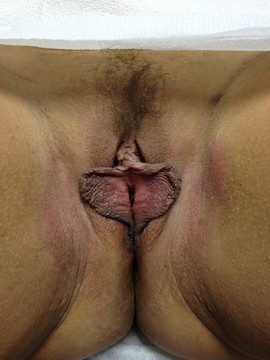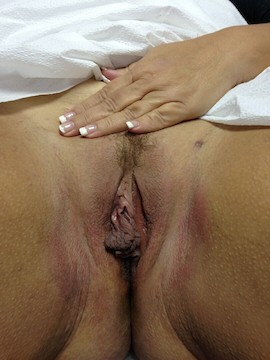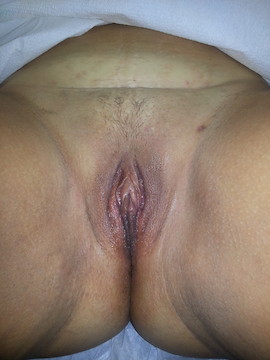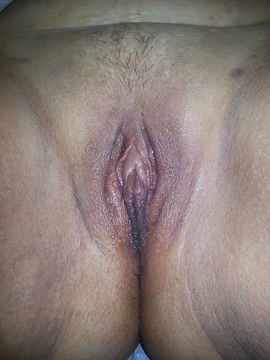Cosmetic Surgery and Labiaplasty
Vaginal rejuvenation, revirgination, and vaginal tightening are all terms used to address the recent trend of gynecologic cosmetic surgery. These procedures, by other names, have been around for decades. Many unsubstantiated claims have been made about these types of procedures, and health care consumers need to be wary of what they read and hear.
There are many legitimate concerns about the appearances and function of the vagina and vulva, especially after childbirth and menopause, when visible changes in these organs are most apparent. The tears and trauma that are sustained by the birth canal can cause pain with sex, scarring, and disfigurement that leads to personal and sexual-partner dissatisfaction. This trauma can create tight, painful spots in the vagina or a laxity and looseness that is also bothersome. Excessive growth of the labia minora (the thin inner lips of the vagina) can begin in adolescence, but can continue throughout life. Women will sometimes notice pain while riding a bicycle, pain with sex, pinching of the labia in their underwear or difficulty wearing tight clothing or bathing suits. Labial tears during childbirth can heal with awkward appearing results. During menopause, many women notice shrinking of the vagina and dryness with sex that is associated with burning and pain. Uncomfortable sex is one of the main reasons for a decrease in sexual relations as women get older.
Proven treatments include the following:
- Labiaplasty- this procedure shapes the labia minora and removes excess tissue. It makes the labia look equal on both sides when one side is bigger than the other, or it makes both labia smaller if they are enlarged. Excellent results are obtained with this simple outpatient procedure which can occasionally be done in the office using local anesthetic. Patient satisfaction is very high. The images above are from a single patient before and after labiaplasty. She was obviously very happy with the results.
- Perineorrhaphy- when the opening of the vagina has been stretched after childbirth, this procedure brings together the separated muscles and connective tissue of the opening (between the anus and vagina) to restore the caliber of the first part of the vagina. This is commonly done when a patient feels her vagina is too loose and her partner states that there is a noticeable difference in friction after childbirth or the muscles have weakened after menopause. Care must be taken to avoid over tightening the opening.
- Vaginal tightening- incisions in the vagina are used to strategically sew the connective tissues of the front or back aspects of the vagina to create a more uniform canal. This does not strengthen muscles of the vagina as some advertisements claim, but instead tightens the “skin” of the inner vagina to improve contact during sex. This also does not increase lubrication during sex, which is very important for sexual satisfaction.
- Pelvic Floor Muscle Therapy- this is a form of physical therapy that objectively increases squeeze tone of the vagina canal, which is an important aspect to sexual satisfaction for both partners. It does not require anesthesia, cutting, or recuperation and is performed in the office using stimulators, surface electrodes and biofeedback to maximize results. Pelvic floor muscle therapy is also an effective form of treatment for many disabling and bothersome problems that occur throughout life and can even diminish some of the symptoms of pelvic organ prolapse.
- Vaginal estrogen therapy- a simple home treatment that can show remarkable results in as little as a few weeks. This is most commonly used in the menopausal years and does not include the risks of systemic (pills, patches, or injections) therapy like blood clots or breast cancer.
- Vaginal CO2 laser treatments- this in-office procedure applies CO2 laser energy to the vaginal and vulvar tissues to stimulate collagen growth necessary for the normal functioning of these organs. In addition to "repairing" the tissues after childbirth and menopause, laser energy has been shown to decrease the itching, burning and discomfort associated with sex that occurs after these life events.
Unproven treatment claims include:
- Clitoral or G spot enhancement- orgasm is a multifaceted response to sexual stimulation, and recent claims of heightened response after these procedures has not been consistent in the literature. Unhooding the clitoris or bulking the clitoris with injections may actually cause the opposite effect because of the sensitive nerves in and around the clitoris that can be damaged. Scarring in any procedure can also lead to unfavorable results.
- Revirgination- this procedure is intended to restore the hymen (ring of skin encircling the opening of the vagina that is usually broken with first-time sex or the insertion of a tampon). Reconnection of this tissue ring can cause scarring and excess tightening of the vaginal opening leading to a painful sensation reminiscent of your first sexual encounter.
- Vaginal rejuvenation is a trademarked term that implies restoration of the original functionality of the vagina. Anatomic surgical repairs of the vagina cannot guarantee improvement in function, since function is a complex product of nerves, connective tissues, cell and hormonal responses, and muscle contraction.
When you have a full discussion with your Female Pelvic Medicine and Reconstructive Surgery doctor, you will understands the risks and benefits of each of the treatments available for your problem. If you have realistic expectations, your treatment outcomes can be remarkable. Childbirth, age, and surgical trauma can cause irreparable damage to vaginal and vulvar function. Many of the problems can be overcome with the thoughtful and experienced care of your urogynecologist. Click here for a download of our March 2014 article on Cosmetic Gynecologic Surgery.
Call 239-449-7979 or Contact Us today!
It's time to start living your life to the fullest. Regain control of your life.














